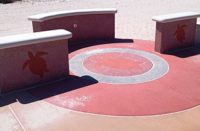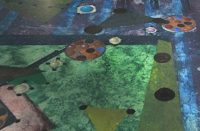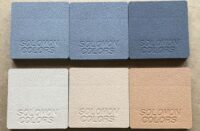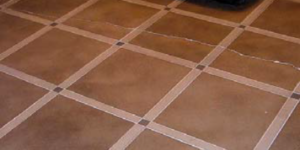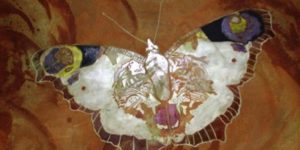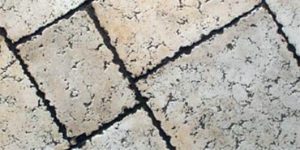Recipe by Steven Ochs, Southern Arkansas University — Magnolia, Ark. 
When you have a dark grey slab, you have to take into consideration how that will affect color and its intensity. Most of the colorants on the market differ as much in transparency as concrete differs in color and porosity. Sometimes, you have to keep applying layers to build up the color you want, and by the time you get done, you have lost the interesting characteristics in the concrete.
Here is a method that will give you accuracy among these variables, reduce the amount of product needed, and save you time.
This technique was a favorite of the Flemish painters of the Early Renaissance. They would build up transparent “glazes” of oil paint over wood covered in a white base. Now, as the light strikes the surface, it penetrates through the layers and reflects back.
Ingredients:
Smith Paints CT-8 cleaner
Smith Paints Color Floor products: White, Natural (gray)
Sealer: based on application.
Directions:
Clean surface with power washer using a zero-degree rotating tip. Apply solution of CT-8, one cup per gallon of water. Scrub with floor machine fitted with either Nylo-Grit or Malish diamond brush. Use 80 grit for most outside broomed finishes. Allow to set for 15 minutes (do not let solution dry) then power-wash off.
Depending on the base color needed, mix the natural to the white and expect for it to dry two or three shades darker. This will even out flaws, stains and color differences due to different batches. If you really want your colors bright, stain the area with pure white.
Transfer the design to the surface. Now that the concrete is sealed with the stain, there is less chance of dust getting into the slab from drawing media.
As you can tell from the photo, the toes of the claw had a base coat of white beneath the red. This allowed the red to rise up from the dull gray slab without the artisan having to apply multiple layers of stain.
The sealer used on this job was a one-part from Xymax with a nonslip aggregate added for safety.
